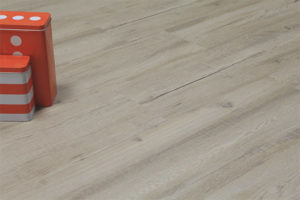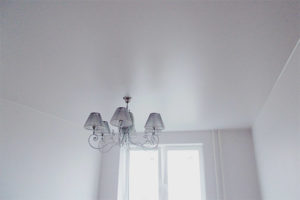The content of the article
Rust appears on metal products due to moisture or mechanical damage, when air penetrates inside the iron sheet due to a scratch or crack. It triggers chemical reactions, the material oxidizes, and destruction begins. It is possible to stop corrosion by synthetic and folk remedies. Which option to choose? Depends on the area and degree of damage.
Natural remedies
It is enough to clean small red spots with a stiff brush or sandpaper, and then paint the metal product. It will protect against the reappearance of corrosion. If the brush fails, natural remedies will help.
Potato and lemon
The dishes and small parts covered with a thin red film are wiped with raw potatoes, cut in half. The vegetable contains acid, which dissolves rust. In small quantities, it does not harm the metal. The treated area is left for 5 minutes, and then wiped with a soft cloth without lint, removing the remaining juice and plaque.
Peel the rusted products and potato gruel, to which ground lemon and 1-2 tablespoons of coarse-grained salt are added. The mass is applied to the damaged areas, left for 15 minutes, then rubbed with a toothbrush and rinse off the residue with a damp cloth.
Instead of sandpaper, dry lemon zest is used. It will come in handy if rust has appeared on a metal ornament or other fragile item. The peel works softly and delicately without leaving scratches on the surface.
The zest can be replaced with gruel from lemon juice and fine-grained salt. The components are mixed and applied with a toothbrush. Wait 15 minutes for the acid to dissolve the brown film.
The stubborn rust is removed with a solution of lemon juice and table vinegar. Liquids are mixed in equal amounts, applied to a damaged item with a sponge or rag. It is advisable to wear rubber gloves on your hands. Leave for 2-3 hours, rinse with warm water and rub the area with a hard metal sponge.
Soda and flour
How to clean old rusty coins so as not to damage? Baking soda. Dilute 2-3 tablespoons of powder with warm water to a thick, uniform consistency. Put the coins in the pulp from the soda, remove after 20 minutes. Scrape off the red coating with a metal brush or washcloth. Repeat the procedure if once was not enough.
Brass items are recommended to be cleaned with table vinegar. Dissolve 10 g of sodium chloride in 120 ml of liquid. Add wheat or corn flour, you can powder from oatmeal. Knead a thick dough, as on pancakes, and apply to damaged areas. After 30 minutes, wipe the paste with a soft cloth, rinse the brass product in warm water and wipe it with a towel.
Important: You can not prepare a solution of wine or apple vinegar. Only table clear will do. Other varieties leave stains on the metal surface that are difficult to erase.
Citric and oxalic acid
The rust is softened with lime juice, which is mixed with salt. But it’s cheaper to use citric acid. Dissolve 3 sachets of the product in a liter of water. Boil the liquid and put rusty nuts, screwdrivers, knives, jewelry or other objects in it. Bubbles on the surface of the water indicate that a chemical reaction has begun.
Leave the metal products in a solution of citric acid for 8-12 hours. The softened coating is removed with a toothbrush or washcloth.
Rust is removed with oxalic acid. The tool even copes with serious damage, but emits toxic fumes. Work with the substance only in ventilated areas.Be sure to use protective suits, respirators, special glasses and rubber gloves.
A glass of water will need 4 tbsp. l oxalic acid. The solution is thoroughly stirred, and then rusty tools are immersed in it. Dishes and jewelry that come in contact with the skin cannot be cleaned in this way.
After 30–40 minutes, the item is removed using tweezers and a red brush is removed with a toothbrush. The metal product is washed several times in a large amount of warm water, and then wiped dry with a towel or soft towel.
Unusual solutions
Not only potatoes and lemon juice remove rust. Soda drinks, hangover pills and even ketchup help. If the natural compounds could not cope with the red coating, the damaged product will save the chemistry.
Cola
The composition of sweet soda includes phosphoric acid, which removes corrosion. Coke is poured into a plastic or glass container, rusty products are immersed in the drink. Take out after 5-8 hours, rub with a toothbrush. On pipes or a machine, soda is sprayed from a spray bottle or applied with a sponge. They wait until the rust becomes soft, and clean off the coating with a brush or crumpled baking foil.
Metal objects are not only soaked in Coca-Cola. Similar properties have cheap soda. The main thing is that they contain phosphoric acid.
Rust Tomatoes
Is there an old expired ketchup in the fridge? Or a can of tomato juice? The product is not thrown away, but is used to clean tools or knives from rust.
Ketchup or juice process stains, leave for 20 minutes. Remove the remaining tomato products with a rag, along with a coating, rinse the metal surface with warm water.
No hangover, no rust
The Alka-Seltzer preparation can restore the shine to aluminum utensils. Dissolve 5 tablets in a can of water, immerse spoons or mugs in the liquid. Remove after 15 minutes, brush with a toothbrush and rinse under the tap.
Tooth Powder and Fish Oil
Metal rivets on clothes, accessories and tools are cleaned with a mixture of crushed white chalk, tooth powder and liquid glycerin. Dry components are mixed in equal parts. A liquid ingredient is added to make a paste that looks like thick sour cream.
The product is applied to rusty areas and left for a day. Remove the remnants of the mass and plaque with a toothbrush, be sure to rinse the metal object under the tap and carefully wipe it with a soft cloth.
Iron water pipes, fittings and car parts are recommended to clean from rust with fish oil. The product is applied in a thick layer to the entire object, left for 3-5 hours. Rust becomes soft and pliable. It is easy to remove with a toothbrush or sponge.
This method has a plus: fish oil creates a protective film that prevents corrosion and extends the life of pipes or tools.
Chemical experiments
Lactic acid or zinc chloride can remove rust from water pipes, tools, fittings and metal poles. The substance enters into a chemical reaction with a red coating, and it changes color, becomes dark blue or black. The rust is removed with a rag dipped in a greasy cream or oil. Some types of metal darken after such cleaning, therefore it is not recommended to clean dishes with zinc chloride or acid, because the pipes can be painted and a plate or spoon should be discarded.
Option 1
You will need 100 g of liquid paraffin, to which 50 g of lactic acid is added. Stir the components until smooth, apply to rust. Under the influence of acid, red plaque will turn into salt, which is easily brushed off with a toothbrush or sandpaper. After processing, the metal surface is wiped with a soft cloth dipped in petroleum jelly or unrefined sunflower oil.
Option 2
A solution is prepared from a liter of water, 50 g of zinc chloride and 5 g of potassium hydrotartrate. Tools are immersed in a liquid, left for several hours or a day, depending on the degree of damage. Then removed, cleaned with a stiff brush and rinsed with water.
Handle chemicals carefully while wearing rubber gloves and other protective equipment. Remove tools from the solution with tweezers, do not put your hands in the liquid.
100% result
A tool consisting of two solutions will stop corrosion. The first part includes:
- ammonium - 53.5 g;
- formalin (40%) - 200 g;
- caustic soda - 52 g.
Dissolve the components in 500 ml of filtered water. While the first solution is infused, prepare the second. It will take 1 liter of water and 100 ml of sulfuric or hydrochloric acid. Stir the components, pour 30 ml of the first into the second solution.
Wipe the part before treatment with acid with gasoline to degrease it. Immerse the rusty object in the solution for 10 minutes, remove it with tongs and rinse with water. You do not need to rub with a brush, the plaque will completely dissolve and will independently lag behind the metal surface.
Electrochemical method
Tie a piece of zinc to the tool or parts. Put in water, add sulfuric acid: 20-30 ml of substance per 1 liter of liquid. After a few days, the coating will dissolve, the part will become clean and shiny.
To quickly remove rust, it is recommended to prepare a concentrated preparation from water and chlorine tin and immerse a metal object into it. Keep 3-5 minutes, rinse under running warm water. Wipe dry with a clean towel.
Perfect shine
Put a few tablespoons of crushed charcoal into the engine oil. Moisten a rag in the slurry and clean the part covered with a red coating. The tool removes rust and polishes the metal surface.
Special tools
Solvents and converters designed to fight corrosion are sold in stores. What is the difference between drugs?
Solvents enter a chemical reaction with plaque, changing its structure. The gel-treated rust can be removed from the surface of the part with a usually dry cloth without any effort. The most popular and inexpensive preparation is BCN-1 Rust Converter.
The main component of this tool is oxalic or phosphoric acid.
Converters, which are produced in the form of suspensions and emulsions, as well as solutions, not only remove rust, but also form a protective film on the metal surface. It stops corrosion and prevents its reappearance.
The active component of the converters is tannin or phosphoric acid.
Features of use
Before machining, the parts are cleaned with a stiff brush, removing loose rust particles and dust. Then the surface covered with a red coating is disinfected with gasoline or “White Spirit”. The drug is stirred and applied with a brush, evenly distributed over the damaged areas. If it turns violet-blue, a reaction has begun.
Brown plaque is removed with a mixture of 15 ml of tartaric acid, 5 ml of butanol and 30 ml of phosphoric acid. Dilute with a liter of water, process metal parts.
Work with tools designed to remove rust, you need to be careful. Most of them contain toxic substances or aggressive components that can leave a burn on the skin or mucous membranes. After removing the plaque, it is recommended to carry out preventive treatment of parts with gasoline or kerosene, because it is easier to prevent corrosion than to stop this chemical process.
Video: how to easily remove rust from metal










Submit